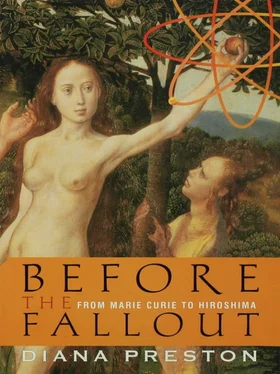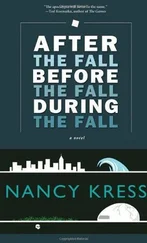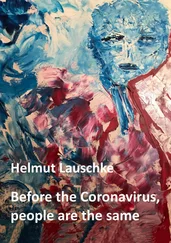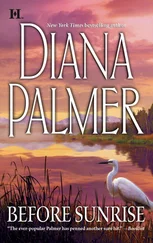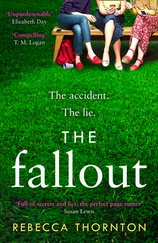The hangar lacked any proper ventilation, so, unless it was raining, Marie performed her chemical treatments in the courtyard to avoid breathing in the noxious fumes. By the time the work was complete she would have shed nearly fourteen pounds. However, there were compensations. As Marie later recalled, “Our precious products… were arranged on tables and boards; from all sides we could see their slightly luminous silhouettes, and these gleamings, which seemed suspended in the darkness, stirred us with ever new emotion and enchantment.”
As the work progressed, with Pierre helping to interpret and present their results, the Central Society of Chemical Products offered Marie facilities to carry out the early stages of purification on a more industrial scale. She accepted gratefully, and the work was overseen by one of Pierre’s students, young chemist Andre Debierne from the Sorbonne, who in 1899 had isolated a third radioactive element in pitchblende: actinium.
On 28 March 1902, over three years after announcing her belief in its existence, Marie Curie finally had sufficient radium—one tenth of a gram—for a definitive test. Once again she hurried to the expert spectroscopist Eugene Demarcav. He confirmed definitively what she had known intuitively—that radium was indeed a new element. She weighed it carefully and recorded the result: 225 times the weight of hydrogen, the lightest element (and very close to the current agreed weight of 226). By May 1903 Marie Curie’s thesis, “Researches on Radioactive Substances,” was ready for the printer. In June she appeared before three luminaries of the Sorbonne to be questioned on her work, a pale figure austerely clad in black. But it was a formality. She knew far more about her findings than her inquisitors. With little ado they conferred her degree with the accolade tres honorable. Seven months later, in December 1903, the Academy of Science of Stockholm announced the awarding to the Curies of the Nobel Prize for Physics, shared with Henri Becquerel, for the extraordinary services they had rendered by their study of Becquerel rays.
Like Rontgen before them, the Curies became unwilling celebrities. People hailed radium as a “miracle substance.” It seemed to offer limitless possibilities and quickly became the most costly substance in the world, valued at 700,000 gold francs a gram. An American chemist speculated, “Are our bicycles to be lighted with disks of radium in tiny lanterns? Are these substances to become the cheapest form of light for certain purposes? Are we about to realize the chimerical dream of the alchemists—lamps giving light perpetually without consumption of oil?” The American exotic dancer Loi’e Fuller, who had arrived in Paris with Buffalo Bill’s “Wild West Show” to become the toast of the Folies-Bergere, begged the Curies for shimmering “butterfly wings of radium.” They had to disappoint her, but Loi’e nevertheless insisted on performing one of her outre routines in their small house.
The Curies’ success had been rapid and dazzling, but there was a price. When Pierre Curie raised his glowing tube of radium aloft at the party to fete his wife’s doctorate, a guest noticed that his long, slender hands were in a very inflamed and painful state. This was the result of exposure to radium rays. Sometimes he found it impossible to button his clothes. He also suffered disabling stabbing pains in the legs for which he dosed himself with strychnine—then a recognized treatment for rheumatism—but which, in retrospect, were probably the result of radiation. Marie’s fingertips, too, were hardened and burned. A few weeks later she would suffer a miscarriage. Neither understood the risks they had been taking.
Indeed, alerted by reports from two German scientists that radium appeared to have physiological effects on the body, Pierre Curie had actually begun experimenting on his own body, tying a bandage containing radium salts to his arm for a few hours. The resulting wound, as he observed with interest, took months to heal. In his detailed report on it he added that “Madame Curie, in carrying a few centigrams of very active material in a little sealed tube, received analogous burns.” These effects sparked the thought in Pierre Curie’s mind that radium could, perhaps, be used to destroy cancerous cells, and he began to work with physicians. Radium was first used in radiotherapy—known as Curietherapy in France—as early as 1903 to treat cancers but also such conditions as the skin disease lupus, strawberry marks, and granulations of the eyelids. A number of treatments evolved, ranging from washing in a solution of radium, to injections of radium, to drinking radium “tonics.” The treatment for cancer was to place tiny glass or platinum tubes containing radium directly next to the malignant cells. The Curies, though, derived no personal financial benefit from the “miracle” substance. They decided not to patent their process for extracting radium, believing it to be against the spirit of science to seek commercial advantage. Such knowledge should be available to all.
• • •
Marie Curie’s discovery of radium was an emphatic push on a door just starting to open on a new subatomic world whose implications challenged long-established beliefs. To some they were unthinkable. Unraveling the mysteries would require intuitive skills, a daring but disciplined imagination, physical energy, and a first-rate scientific mind. These were exactly the qualities of the guest who had been observing Pierre Curie’s damaged hands with such sympathetic interest: the young New Zealand physicist Ernest Rutherford.
TWO
A RABBIT FROM THE ANTIPODES
RUGGED, RUDDY, AND ROBUST, Ernest Rutherford looked more like a rugby player than a scientist. His appearance reflected his roots in the still-young British colony of New Zealand, where he was born in 1871, a few miles south of the pioneering town of Nelson on South Island. His grandfather George Rutherford, a craggy-faced wheelwright with muttonchop sideburns, had arrived in New Zealand from Dundee in Scotland with his family in 1843. The party included his five-year-old son James, who in 1866 married schoolteacher Martha Thompson. Ernest was their fourth child and second son.
James Rutherford earned his living for a while, like his father, as a wheelwright, but life was hard and the large family struggled. In 1883, after other ventures had failed, James loaded wife, children, and possessions onto a paddle steamer bound for Havelock, where he worked as a flax-miller, processing flax harvested in the adjoining swamps. The young Ernest enjoyed roaming the countryside, shooting pheasants and wild pigeons for the pot. Newtonlike, he also made models of waterwheels and enjoyed taking clocks to pieces and reassembling them.
Rutherford’s obvious intelligence coupled with relentless curiosity and remarkable powers of concentration won him a scholarship to the small but prestigious Canterbury College in Christchurch, part of the University of New Zealand. Here Rutherford excelled in mathematics and physical sciences. In his fifth year, after gaining his B. A., M. A., and BSc, he turned to research. The recent discovery in 1888 by the German scientist Heinrich Hertz of electromagnetic waves, or radio waves as they are called today, caught his imagination. He developed a magnetic detector—a prototype radio receiver—to pick up radio waves.
However, without funds to support himself, an academic career seemed beyond his grasp. His father, whose flax business had not prospered, was in no position to help. Rutherford pinned his hopes on winning an 1851 Exhibition Scholarship. The Great Exhibition, an international celebration of industry, science, and commerce instigated by Prince Albert and held in London in 1851, had attracted over 6 million visitors and made a fat profit, some of which had been channeled into scholarships to pluck gifted science graduates from across the empire and bring them to Britain. Rutherford was digging in the family garden when the postman brought the letter announcing he had been awarded a scholarship for his work on magnetism and electricity. He reputedly flung down his spade with the triumphant cry of “That’s the last potato I’ll dig.”
Читать дальше
